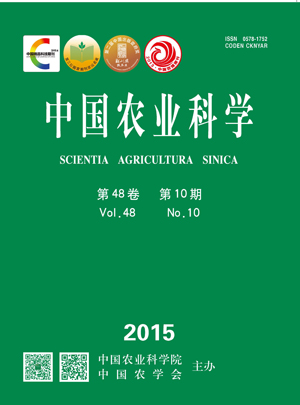【Objective】Root border cells (RBCs) are released from the root cap as individual cells or a group of attached cells. The mucilage of root border cells acts in a manner similar to that of neutrophil extracellular traps (NETs) in defense, thus, known as border cell extracellular traps (BETs). The extracellular DNA (exDNA) and proteins are components of border cell mucilage, which have been considered to play a vital role in protecting root tip from biotic and abiotic stresses.
Allelopathy is one of the successful mechanisms of exotic plant for invading. The objective of this study is to reveal the roles of the exDNA and extracellular proteins of root border cell mucilage in resistance to allelochemical stress from an invasive plant, Chenopodium ambrosioides L..【Method】
Experiments were performed with maize (Zea mays L.) ‘Yayu26#’, a widely grown crop in the introduced habitats of C. ambrosioides under aeroponic culture with agar medium. The developmental characteristics of root border cells in maize were investigated. And the
roots were treated with volatile oil from C. ambrosioides and its two main components, α-terpinene and cymene, respectively, then the experiments were divided into two groups. In one group, the root border cell viabilities and relative areas of root border cell mucilage were measured directly. In another group, the exDNA or extracellular proteins of root border cell mucilage were degraded by DNase I or protease, and then the cell viabilities and relative areas of root border cell mucilage of maize were studied.【Result】 The first border cell formation almost synchronized with root tip emergence in maize. The number of border cells increased with the development and elongation of the root. When the root length was about 30 mm, the number of border cells reached the maximum, that was about 6 130, then declined slightly to a stable level. Meanwhile, the activities of pectin methylesterase were correlated with root length negatively (
P<0.01). Once the emerging of root, the activities of pectin methylesterase reached the top, and then declined into a low level. The cytotoxicity from volatile oil,
α-terpinene and cymene resulted in significant decrease of the
viabilities of root border cells (P<0.05). The allelopathic effects of
α-terpinene and cymene were weaker than that of volatile oil. The allelopathic effects of mixed treatment group were different from the individual groups, which the
viabilities of root border cells were higher than any other treatment groups, showed minimal toxicity. Volatile oil from C. ambrosioides had potential to induce the enlargement of mucilage with dose-dependent. At the dose of 5 μL, the relative areas of mucilage enlarged significantly in volatile oil treatment groups (P<0.05). Compared with the control,
α-terpinene-treated and cymene-treated induced no significant change of the relative areas of mucilage. Degradation of exDNA or extracellular proteins with DNase I or protease resulted in loss of root border cells resistance to allelochemical stress, and the viability of root border cells decreased obviously, there was less than 10% viabilities of root border cells remained in volatile oil treatment groups, while there was more than 80% in
α-terpinene-treated, cymene-treated and the combined treatment of
α-terpinene and cymene. 【Conclusion】Volatile oil from
C.
ambrosioides and its two main components,
α-terpinene and cymene were cytotoxical, both of them inhibited viabilities of root border cells, while exDNA and extracelluar proteins of root border cell mucilage play an important role in resistance to allelochemical stress from
C.
ambrosioides.









